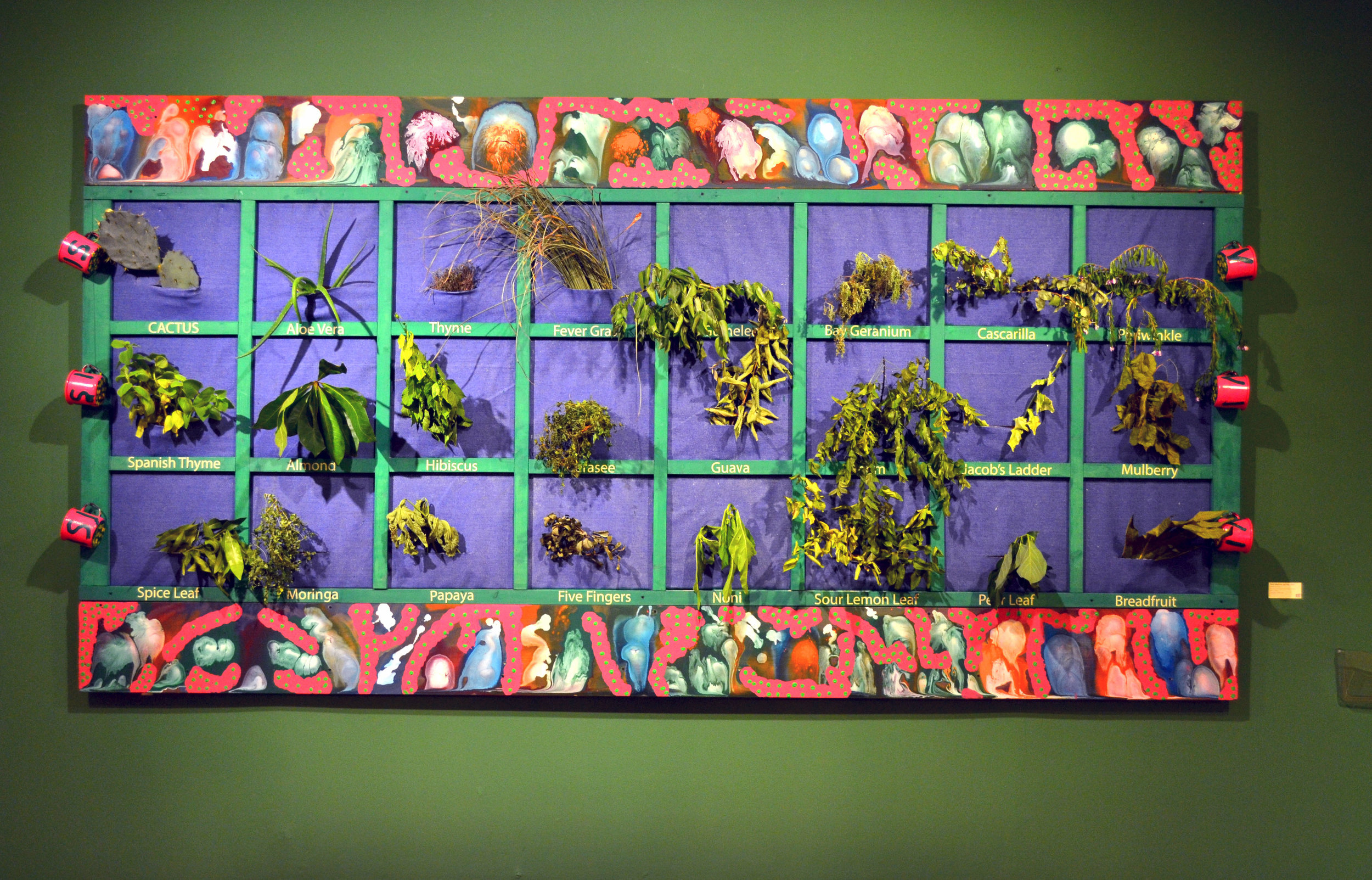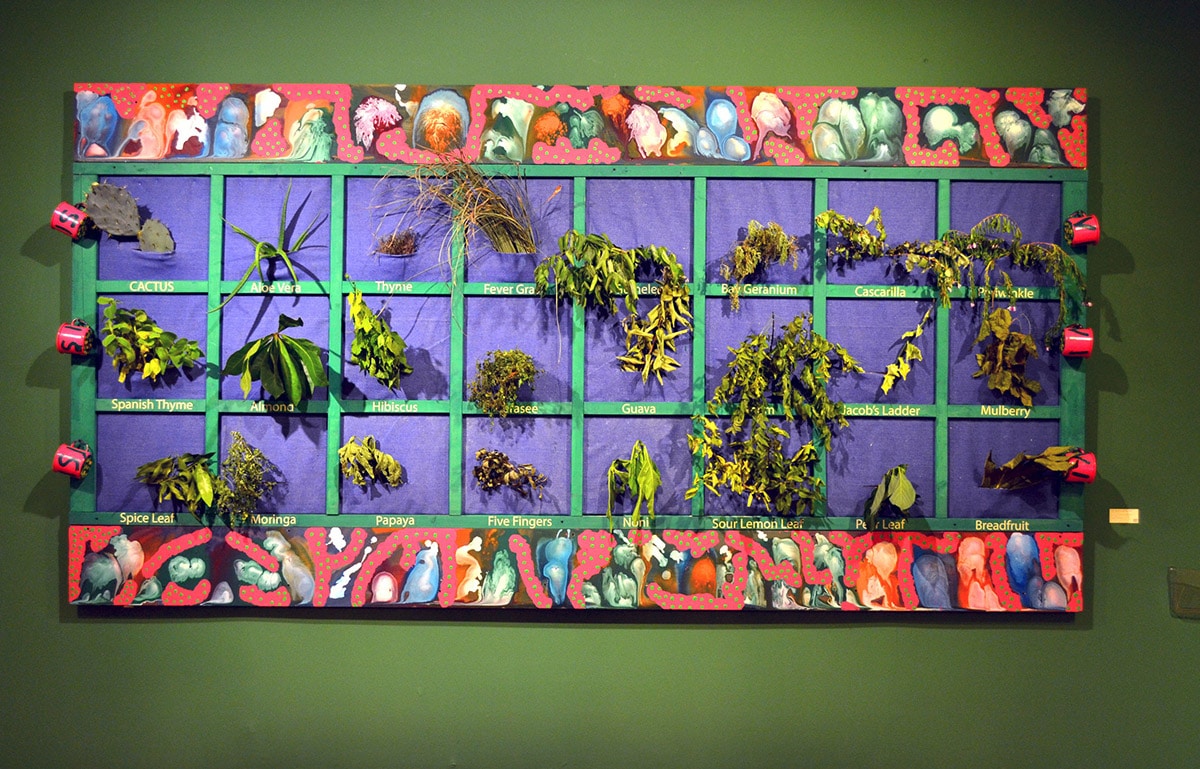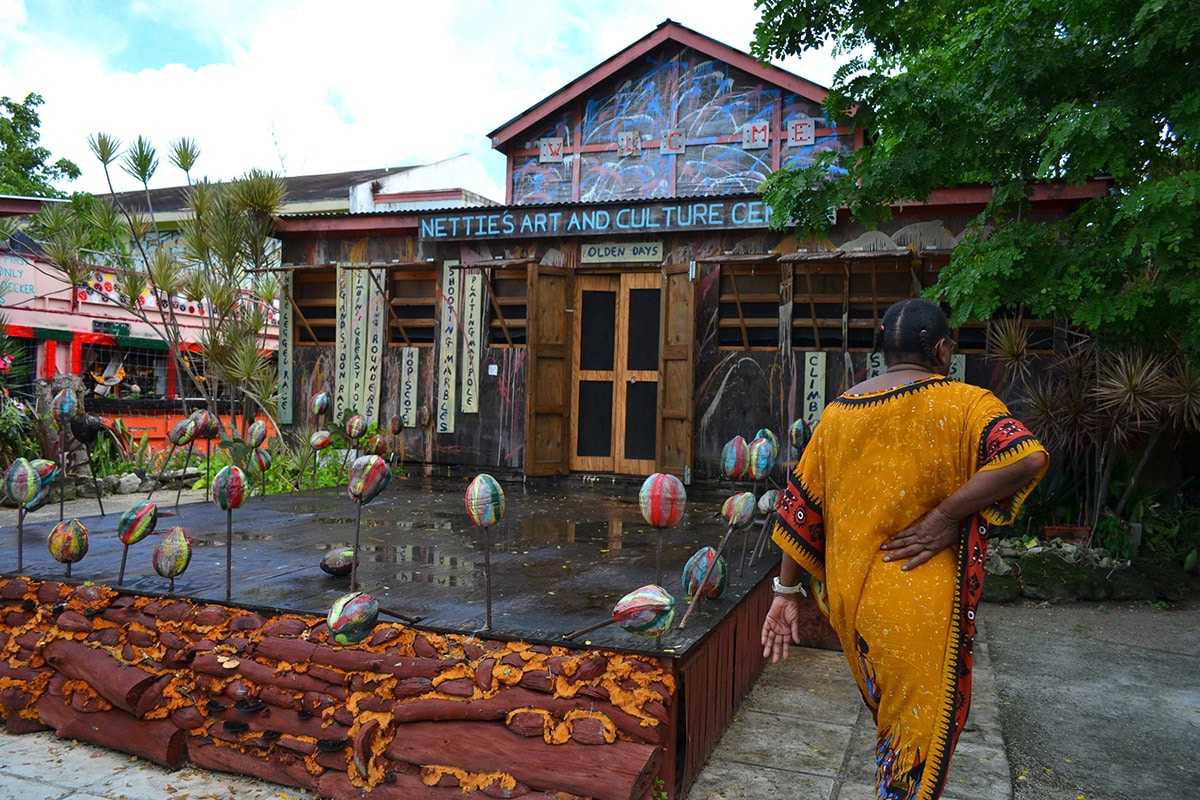
By Dr Ian Bethell-Bennett
When a loved one dies, always remember to be respectful.
Always wear black for at least six months, then half-mourning is permissible for another six months.
In Greece, they say, mourning can last a lifetime.
Why spend a life mourning when death is a celebration?
When the wind blows, close the windows, do not sweep at night because the good will be tossed out with the bad.
Throw a pinch of salt over your shoulder when you cook.
Always give an offering to those who have gone before.
Always read the signs around you.
Take up King Tut’s book of dreams to see what you dreamed, and play your number accordingly.
How he die? He die good or bad?
And so it went, and so it goes… yet we claim that we do not associate with these things.
Art has a way of laying bare so much of what we do not do and in that way we can see who we are not.
Today, these sayings and customs have become associated with something other than Christianity and spirituality, though many people still fear walking past a graveyard at night. Most people refuse to remember the dream book that paved the way for a roof, a window, a car, when numbers were peddled illegally around Nassau by particular numbers men whom everyone knew, everyone named but no one challenged. Today, numbers are a staple, but gambling has lost its ‘original sin’ aspect, even though the legislation still holds it and other games of chance as being illegal.

Installation shot of Netica “Nettie” Symonette’s “No Cross, No Crown” on view in “Medium: Practices and Routes of Spirituality and Mysticism,” at the NAGB through March 11th, 2018. Images courtesy of the NAGB.
Mind you, Bahamians cyan go to no casino on the other side of the bridge, only those set in shopping plazas and what Island Luck and What fall and so on…Bahamians cannot Gamble in the casino, they can now go to church wherever they wish, though St. Agnes, Bethel Baptist, Wesley Methodist all have their place in Bahamian class and race history. We no longer remember this part of the painful past.
Vodoun is not originally from Haiti (though so many condemn Haiti for practising black arts) but from Africa. African slaves, or enslaved Africans, were beaten to death for insisting on their humanity. Today, we ignore this and gloat in our sense of entitlement. We have lost so much of the meaning of the past, mixed with so many other pasts, and brought to another shore, that we have elided any sense of who we were not allowed to be.
As I walk through the setting up for the newly opened “Medium: Practices and Routes of Spirituality and Mysticism,” I am struck by the incredible wealth of talent in the art presented. I am brought to remember by Netica “Nettie” Symonette’s work and the works of Amos Ferguson, the attraction-repulsion of my early days. Church was sacred part of Bahamian or Nassuvian life, as people prided themselves on attending twice on Sundays—at least—once on Wednesdays, perhaps once or twice on Saturdays and maybe one day in the week. However, the church was a part of the community that helped build a sense of community. Today, this is no longer the case. Many churches close their doors and bar their windows against the incursion of ‘others’. The whole message of Christianity, as far as I have read, is to love. Somehow, we have lost that message. At the same time as thinking all of this, these artists brought back a remembrance of times past.
Bottles hung in the mango tree in the ‘yard’ of the house next to City Meat Market in Palmdale, the Rosetta Street branch to be exact (there used to be one on Madeira Street as well). These bottles ate a part of Nettie’s installation, which gave pause because so much time has passed and so much water has passed under the Paradise Island Bridge that we have forgotten that so much of this spirituality was deeply linked to who we were. Why separate the two?
In the good Book that so many people love to quote, there are moments, stories, tales, anecdotes, testaments, epics, and, of course, interventions of Spirit, especially by Jesus, the son of a carpenter, but the son of God, or man. We manage, somehow, though, to continue to image/imagine Jesus as a leader dressed and looking the part. As much as the Bible contradicts this image, we hold on to it. Not sure if there were any stories more spiritual and mystical than his healing of the sick, especially when the man after descended from the roof by his friends, he was healed and was told to get up and go.

Nettie’s Cultural Centre in Cable Beach.
Now, which of these is easier: to say, “Your sins are forgiven,” or to say, “Get up and walk”? But to prove to you that the Son of man has authority on earth to forgive sins,’ — then he said to the paralytic-get up, pick up your bed and go off home.” Luke 5:23
Today, we are so stuck in the blasphemous mud of self-praise and self-aggrandisement that we can no longer see the spirituality and mysticism present in the “Word of the Lord”. We remain convinced that the colonial inquisitions that beat, burnt, hung, guillotined (as they did witches and zealots alike) the “demons” out of the inferior Africans were good and should be preserved. We think little of casting dispersions on everyone around us for their shortcomings, yet we steal time at the drop of a hat. As the old saying goes, what goes around comes around…so always watch out for time.
It has become interesting to see how peppered with anti-black, anti-woman, anti-foreign, anti-African and anti-poor our speech as becoming, yet we proclaim from the rooftops our Christianity as we flog others to and till the end of their days. There is no love left in our preaching, and even less left in our lives. It is not a coincidence that Haiti has been made black, much like Africa—The Dark Continent—creating stories of inferior beings to inspire fear, awe and loathing in us and of us.
What is fascinating about these works, is that they do not theorise the experience of living as Bahamians in The Bahamas, deeply colonised and syncretised, deeply spiritual and Christian, when it served, they also bring to light the massive energy used to disempower the story that was never registered through history. Never underestimate the work of the power, as can be seen in these works from Ferguson and Symonette.
“Nettie and Amos”, have done inspirational work, with no intention of becoming something, somebody, (as Bahamians love to throw up at people), they are already beings of value and worth…which is hardly what has been taught to so many of us. The symbolism, the reality, the lore, folklore, and regular parlance of the day, is alive in the art of these two extraordinary Bahamian creatives. It may be hard to understand, for some, but that shows the extent to which the past, the story, has been wiped from many people’s minds. Why should it be hard to get a new broom to sweep clean, but ol’ broom always knows the corners, or where the dirt is… as much as we claim ol’ head no make good, we need those old heads to remind us of what we are forgetting…
Some of the art exhibited in this show, may cause pause to some, because it is deeply felt, deeply lived, deeply drawn on, and deeply, oh so deeply, conjured, but it is as Bahamian as boil fish, (without the ed), and conch salad. There has come a juncture where our sanitising the past erases all the struggle that went before. This art, much like other works that are so deeply entrenched in Bahamian life, has been hard won.
“Medium” does not ignore the Bahamian past of segregation, Women’s Suffrage, yet fewer rights, the fight of the General Strike, the pressure that sparked the Burma Road Riots, no land no vote, move ya house to the next lot, white power, Black nation, but it is also about the fusion of West, Africa and the Caribbean, along with a sprinkling of everything else and everyone else who inhabits this space.
As we lose a generation of older Bahamian artists, this show is important because it uncovers so much that has been left unsaid of late. As Sylvia Wynter wrote, ‘we must learn to sit down together and talk about a little culture.” Journal of West Indian Literature. A Transcultural Rethinking Modernity, 2001, pp. 12-38
The syncretism, mestizaje, creolité, are all part of Caribbean cultural history and expression. The works exhibited in Medium go the distance in showing what we no longer see: the richness, the diversity and the depth of cultural practices and religious expression in the country that cannot be silenced by even an act of Parliament forbidding mourning, or forbidding Obeah. When we pray for the repose of our soul, are we just being religious, devoid of Christianity, or is there a deeply rooted spirit in that soul that we cannot escape?